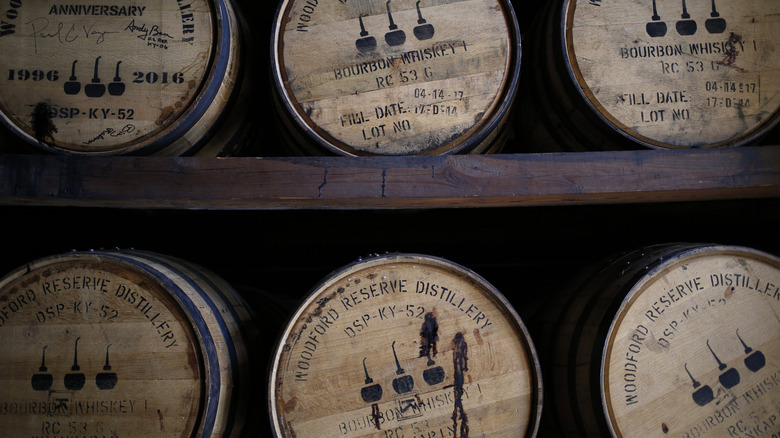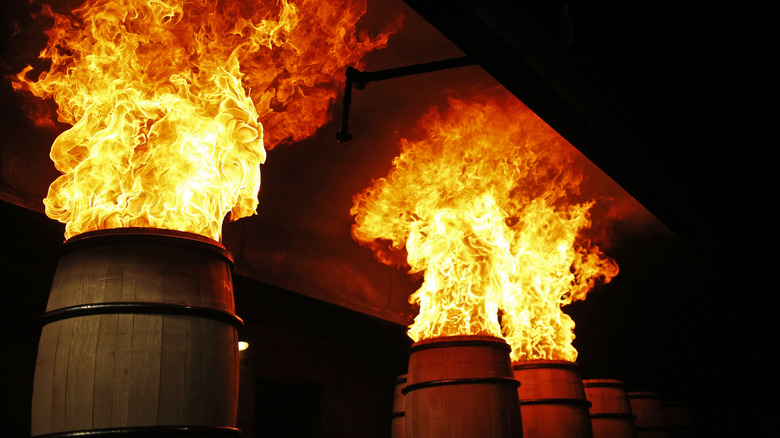The Legendary Origin Of Barrel Aging Bourbon
Bourbon has a rich history intertwined with the use of barrels. They not only served as vessels for storage and transportation, but they also played a significant role in shaping the distinctive flavor profile of bourbon. According to some fascinating folklore, the possible reasons behind placing bourbon in barrels and how this practice has contributed to its unique flavor all came down to one thing: fish.
The use of barrels in the production of bourbon dates back to the early days of American whiskey-making. At the time, legend has it that distillers repurposed used barrels that were originally used to store fish. Naturally, these barrels would have had a strong odor, which could seriously impact the flavor of the whiskey. To avoid ruining the spirit, distillers could have begun using a key technique in bourbon-making which is "toasting" or "charring" the interior of the barrels. It's this vital step that actually gives bourbon its distinctive characteristics.
How the barrels improved the bourbon
Ultimately, whether the fishy origins surrounding the barrel-storaging techniques are true or not, charring the barrels imparted a unique flavor from the scorched wood into the spirit itself. That's why the way in which this step transforms the spirit is essential to making bourbon. This infusion of flavors adds depth, complexity, and a distinct caramel note to the whiskey. The charred wood can also impart smoky undertones, complementing the spirit's natural sweetness and enhancing its overall profile.
Though modern bourbon production does not rely on former fish barrels, it instead adheres to specific regulations. However, the barrels still provide the whiskey with an opportunity to mature, mellow, and absorb flavors from the wood based on the degree to which the barrel is charred. So today, as we savor a glass of bourbon, we can appreciate the interesting and folky twists and turns that developed and formed this beloved American spirit.

